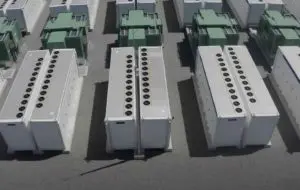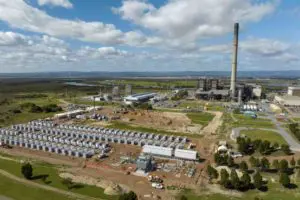Bidders for projects to fill in part of the capacity gap left by the impending closure of Australia’s largest coal fired power station have been given another month to lodge their financial bids after the tender was nearly tripled in size.
The original NSW tender was for at least 380MW of flexible capacity with at least two hours of storage, but this was expanded to 930MW after the federal government agreed to fund the expanded portion of the bigger tender in what amounts to the first rollout of the Capacity Investment Scheme.
The NSW component of the tender is open to gas-fired generators, or at least those who think they can compete with battery storage and demand management on price, but the federal government component is open to battery storage only.
That makes it one of the most significant battery tenders in the country to date. And it is expected to invite a whole host or proposals given that battery storage – along with rooftop solar – is probably the healthiest part of the green energy transition given the slow down in large scale wind and solar.
An update to tender guidelines distributed to parties by AEMO Services last week notes that the deadline for “financial value” bids for the new capacity has been extended from July 21 (last Friday), to August 16.
It makes clear that gas-fired generators and demand management technologies are not eligible for the 550MW federal component. Those two technologies remain eligible for the 380MW NSW component, although it would be surprising if any new gas fired generators are able to compete.
It also advises that network and energy security benefits of any new installations are likely to be considered by AEMO and the government as part of a “portfolio effect”, rather than a specific project.
The outcome of the tender is likely to be a key part of considerations by the NSW government on whether the Eraring coal generator, or at least some of its units, should be kept open for another summer, or even longer.
The 2.8GW Eraring is currently schedule by its owner Origin Energy to closes in August, 2025, although that date has always been indicative, and not locked in.
The NSW government has sent out conflicting signals about its intentions on Eraring – although it has dialled back on the idea of buying the ageing plant – and is currently conducting a review of the health of the system.
It has been advised that if it does wish to pay the costs of keeping the plant open – which will surely be the Origin asking price – then it might as well invest in new projects such as battery storage which will have a longer life, and deliver the flexibility a renewable energy grid requires.
Meanwhile, the new owners of the 1.3GW Vales Point coal plant NSW have extended the likely shut down date to 2033, out from 2029, citing a review of its technical life. The plant will be 53 years old under the new close down date.
Coal generators – or at least those with their own adjacent mine supplies – are currently making huge profits from wholesale electricity markets, largely because of the lack of competition, and because in states like NSW and Queensland, renewables have not made big enough inroads into the market.
The combined NSW and federal government tender for firm capacity seeks a nominal 930MW and two hours of storage (1860MWh), which beats the 700MW and 1400MWh sought for the “shock absorber” battery that will maximise transmission flows towards the major load centres.
Battery storage developers usually build much bigger facilities to give maximum flexibility and to allow them to play in the multiple other markets that are available to the technology. The Waratah Super Battery, for instance, which won the “shock absorber” tender, is sized at 850MW and 1680MWh.
The NSW government is also conducting a second tender for new wind and solar generation, as well as long duration storage, defined as eight hours or more, and will launch a third tender later this year.
The first tender secured 1.3GW of wind and solar capacity, although some of it was already in construction, but just one winning storage tender, the country’s first eight hour battery to be built by RWE in south-west NSW.
More eight hour batteries are expected to feature in the current and future tenders, with pumped hydro deemed too difficult for such programs and will likely have to rely on more direct intervention such as the state government’s $1 billion Energy Security Fund










